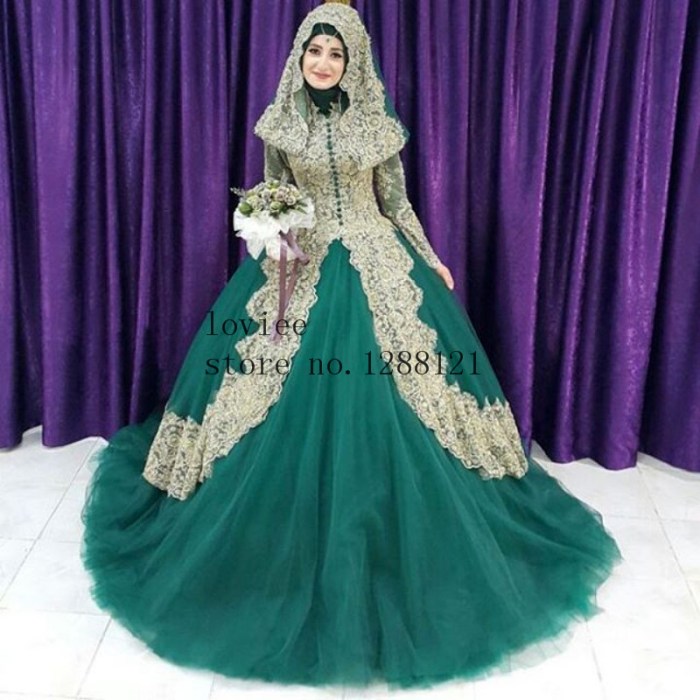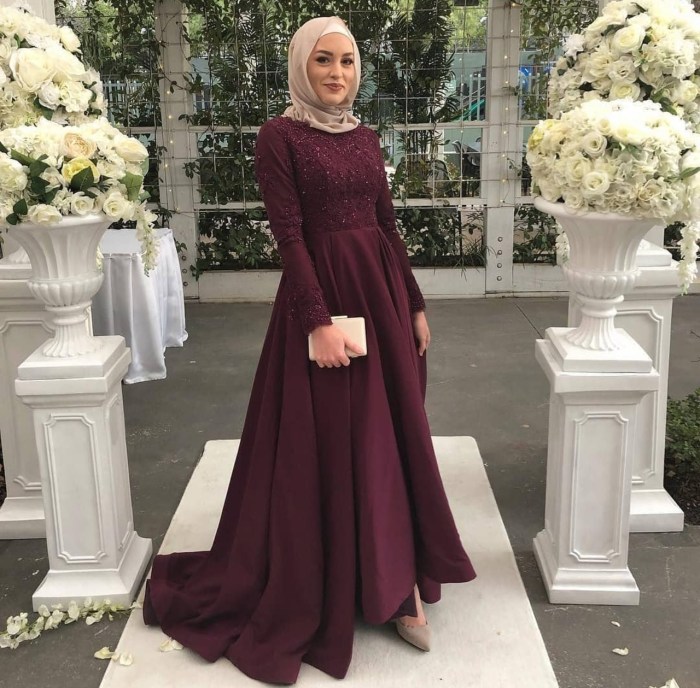Arabic Wedding Guest Dresses: A Style Guide
Attending an Arabic wedding is a vibrant and joyous occasion, and choosing the right attire is crucial to show respect for the culture and celebrate the event appropriately. This guide explores the diverse world of Arabic wedding guest dresses, encompassing styles, fabrics, colors, accessories, and etiquette.
Styles of Arabic Wedding Guest Dresses
Arabic wedding guest dress styles have evolved significantly over the past 50 years, reflecting changing fashion trends while retaining core cultural elements. Traditional styles often feature flowing silhouettes, rich fabrics, and intricate embellishments, reflecting a sense of elegance and celebration. Modern interpretations incorporate contemporary silhouettes and design elements, creating a balance between tradition and modernity.
Regional variations are also prominent. For instance, dresses from the Levant might emphasize intricate embroidery and detailed beadwork, while those from the Gulf region may incorporate bolder colors and luxurious fabrics. North African styles often feature distinctive cuts and silhouettes, influenced by Berber and other regional traditions.
| Dress Style | Description | Suitable Occasion | Regional Origin (Example) |
|---|---|---|---|
| Kaftan | A loose-fitting, long robe with wide sleeves, often adorned with embroidery or embellishments. | Formal wedding celebrations, evening receptions. | Morocco, Lebanon |
| Jellabiya | A long, loose-fitting robe, typically made from lightweight cotton or linen. Often features simple designs. | More casual wedding events, daytime celebrations. | Egypt, Sudan |
| Thobe | A long, loose-fitting robe traditionally worn by men, but adapted for women in elegant styles. | Formal and informal wedding events, depending on embellishments and fabric. | Saudi Arabia, UAE |
| Abaya | A long, loose-fitting cloak traditionally worn by women, often in black, but available in various colors and fabrics for celebrations. | More modest wedding events or as a cover-up over other dresses. | Saudi Arabia, UAE |
Fabrics and Materials Used in Arabic Wedding Guest Dresses
The choice of fabric is integral to the overall look and feel of an Arabic wedding guest dress. Traditional fabrics often hold cultural significance, reflecting heritage and craftsmanship. The drape, breathability, and overall luxuriousness of the fabric contribute to the overall aesthetic.
| Fabric | Properties | Cultural Significance (Example) | Price Range (General) |
|---|---|---|---|
| Silk | Luxurious, smooth, drapes well. | Symbol of wealth and sophistication in many Arab cultures. | High |
| Velvet | Rich, soft, warm. | Often associated with royalty and special occasions. | Medium-High |
| Brocade | Heavy, richly patterned, luxurious. | Reflects intricate craftsmanship and artistry. | Medium-High |
| Cotton | Lightweight, breathable, comfortable. | Commonly used for everyday wear, also for less formal occasion dresses. | Low-Medium |
Color Palettes and Embellishments in Arabic Wedding Guest Dresses

Source: emasscraft.org
Color palettes in Arabic wedding guest dresses often reflect cultural symbolism and preferences. Certain colors hold specific meanings, and the choice of color can significantly impact the overall mood and feel of the outfit. Embellishments add a touch of elegance and artistry, enhancing the visual appeal.
- Rich jewel tones: Emerald green, sapphire blue, ruby red – these colors often symbolize wealth, prosperity, and good fortune.
- Muted gold and silver: These metallic shades represent elegance and sophistication.
- Deep purples and burgundy: These colors often signify royalty and prestige.
- Embellishments: Intricate embroidery, delicate beading, sparkling sequins, and shimmering appliqués are common embellishments, often reflecting regional styles and traditions.
Accessorizing Arabic Wedding Guest Dresses
Accessories play a vital role in completing an Arabic wedding guest look, adding personality and enhancing the overall style. The right accessories can transform a simple dress into a stunning ensemble.
| Accessory | Description | Dress Style Pairing | Example |
|---|---|---|---|
| Jewelry | Statement necklaces, earrings, bracelets, and rings. | Kaftan, Thobe | Large gold earrings and a jeweled necklace. |
| Headpieces | Elaborate headbands, tiaras, or veils. | Formal dresses, Abaya | A jeweled headband with a matching necklace. |
| Bags | Clutch bags, embellished purses. | Most dress styles | A small, ornate clutch bag. |
| Shoes | Elegant heels or flats, depending on the dress and occasion. | All dress styles | High-heeled sandals or embellished flats. |
Modern Trends in Arabic Wedding Guest Dresses
Modern trends in Arabic wedding guest dresses blend traditional elements with contemporary styles. Designers are incorporating modern silhouettes, necklines, and sleeve styles while maintaining the cultural essence of the attire. This results in a fresh and stylish take on classic designs.
- A-line silhouettes: A flattering and versatile shape that complements various body types. Often paired with intricate embroidery or beadwork.
- High necklines: Elegant and sophisticated, often seen in modern interpretations of traditional styles.
- Long sleeves: A common feature in many traditional designs, but now incorporated with modern cuts and fabrics.
- Pastel colors: A softer, more modern approach to color palettes, often combined with subtle embellishments.
Etiquette and Dress Code for Arabic Weddings

Source: zahrahrose.com
Respecting cultural norms and traditions is paramount when choosing an outfit for an Arabic wedding. While the specific dress code may vary depending on the region and family, modesty is generally appreciated. It’s advisable to avoid overly revealing clothing, short hemlines, and sleeveless tops.
It’s always best to err on the side of caution and choose an outfit that is both elegant and respectful of the cultural context. If unsure, it’s always a good idea to inquire with the hosts or a close friend about appropriate attire.
Questions Often Asked
What is the appropriate length for an Arabic wedding guest dress?
Generally, a modest length, below the knee or ankle-length, is considered appropriate for most Arab weddings. However, it’s always best to check with the host or invitation for specific guidelines.
Choosing the perfect Arabic wedding guest dress often involves considering the various events surrounding the celebration. A stunning kaftan might be ideal for the main ceremony, but for the subsequent festivities, you might want something more comfortable and less formal. This is where finding the right outfit for the after party dress wedding becomes crucial, allowing you to continue celebrating in style while still adhering to appropriate cultural norms for the Arabic wedding.
Ultimately, your choice reflects your personal style while complementing the overall celebratory atmosphere.
Are there specific colors to avoid?
While there aren’t strict rules, it’s generally advisable to avoid wearing white (as it’s traditionally reserved for the bride) or very revealing clothing. Subdued elegance is usually preferred.
What type of footwear is suitable?
Elegant heels or flats are suitable, depending on the venue and your comfort level. Avoid anything too casual or flashy.
Is it acceptable to wear a headscarf?
While not mandatory for guests, wearing a headscarf can be a respectful gesture, especially if you are not of Arab descent. Observe other guests for cues on appropriate head coverings.




